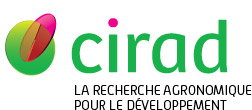Bastola Anil K., Soffiatti Patricia, Behl Marc, Lendlein Andreas, Rowe Nick P.. 2021. Structural performance of a climbing cactus: Making the most of softness. Journal of the Royal Society Interface, 18 (178), 15 p.
|
Version publiée
- Anglais
Sous licence  . .
614324.pdf Télécharger (2MB) | Prévisualisation |
Résumé : Climbing plants must reach supports and navigate gaps to colonize trees. This requires a structural organization ensuring the rigidity of so-called 'searcher' stems. Cacti have succulent stems adapted for water storage in dry habitats. We investigate how a climbing cactus Selenicereus setaceus develops its stem structure and succulent tissues for climbing. We applied a 'wide scale' approach combining field-based bending, tensile and swellability tests with fine-scale rheological, compression and anatomical analyses in laboratory conditions. Gap-spanning 'searcher' stems rely significantly on the soft cortex and outer skin of the stem for rigidity in bending (60–94%). A woody core contributes significantly to axial and radial compressive strength (80%). Rheological tests indicated that storage moduli were consistently higher than loss moduli indicating that the mucilaginous cortical tissue behaved like a viscoelastic solid with properties similar to physical or chemical hydrogels. Rheological and compression properties of the soft tissue changed from young to old stages. The hydrogel–skin composite is a multi-functional structure contributing to rigidity in searcher stems but also imparting compliance and benign failure in environmental situations when stems must fail. Soft tissue composites changing in function via changes in development and turgescence have a great potential for exploring candidate materials for technical applications.
Mots-clés Agrovoc : propriété mécanique, propriété rhéologique, propriété physicochimique, stade de développement végétal, adaptation physiologique, tissu végétal, tige, rhéologie, croissance
Mots-clés géographiques Agrovoc : Brésil
Mots-clés libres : Climbing cactus, Succulence, Biomechanics, Rheology, Skin-hydrogel-core structure
Agences de financement européennes : European Commission
Programme de financement européen : H2020
Projets sur financement : (EU) Towards a new generation of plant-inspired growing artefacts
Auteurs et affiliations
- Bastola Anil K., BCRT (DEU)
- Soffiatti Patricia, CIRAD-BIOS-UMR AMAP (FRA)
- Behl Marc, BCRT (DEU)
- Lendlein Andreas, BCRT (DEU)
- Rowe Nick P., Université de Montpellier (FRA) - auteur correspondant
Source : Cirad-Agritrop (https://agritrop.cirad.fr/614324/)
[ Page générée et mise en cache le 2025-10-02 ]




